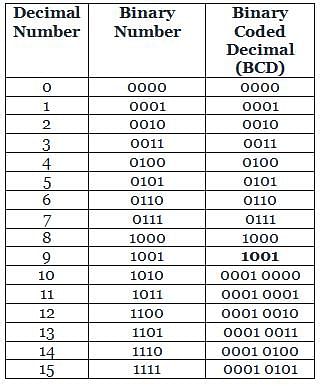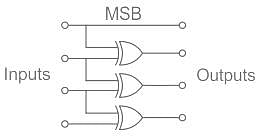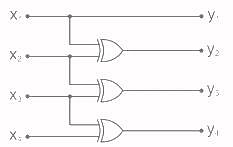Electronics and Communication Engineering (ECE) Exam > Electronics and Communication Engineering (ECE) Tests > Topicwise Question Bank for Electronics Engineering > Test: Number Systems & Binary Codes - 1 - Electronics and Communication Engineering (ECE) MCQ
Test: Number Systems & Binary Codes - 1 - Electronics and Communication Engineering (ECE) MCQ
Test Description
10 Questions MCQ Test Topicwise Question Bank for Electronics Engineering - Test: Number Systems & Binary Codes - 1
Test: Number Systems & Binary Codes - 1 for Electronics and Communication Engineering (ECE) 2025 is part of Topicwise Question Bank for Electronics Engineering preparation. The Test: Number Systems & Binary Codes - 1 questions and answers have been
prepared according to the Electronics and Communication Engineering (ECE) exam syllabus.The Test: Number Systems & Binary Codes - 1 MCQs are made for Electronics and Communication Engineering (ECE) 2025 Exam. Find important
definitions, questions, notes, meanings, examples, exercises, MCQs and online tests for Test: Number Systems & Binary Codes - 1 below.
Solutions of Test: Number Systems & Binary Codes - 1 questions in English are available as part of our Topicwise Question Bank for Electronics Engineering for Electronics and Communication Engineering (ECE) & Test: Number Systems & Binary Codes - 1 solutions in
Hindi for Topicwise Question Bank for Electronics Engineering course. Download more important topics, notes, lectures and mock
test series for Electronics and Communication Engineering (ECE) Exam by signing up for free. Attempt Test: Number Systems & Binary Codes - 1 | 10 questions in 30 minutes | Mock test for Electronics and Communication Engineering (ECE) preparation | Free important questions MCQ to study Topicwise Question Bank for Electronics Engineering for Electronics and Communication Engineering (ECE) Exam | Download free PDF with solutions
Test: Number Systems & Binary Codes - 1 - Question 1
Find the Octal equivalent of hexa decimal number (FB2)16?
Detailed Solution for Test: Number Systems & Binary Codes - 1 - Question 1
*Answer can only contain numeric values
Test: Number Systems & Binary Codes - 1 - Question 2
If (154)b / (14)b = (8)10, then what is the radix b is _______?
Detailed Solution for Test: Number Systems & Binary Codes - 1 - Question 2
Detailed Solution for Test: Number Systems & Binary Codes - 1 - Question 3
Test: Number Systems & Binary Codes - 1 - Question 4
Which of the following is not an invalid BCD Code?
Detailed Solution for Test: Number Systems & Binary Codes - 1 - Question 4
Test: Number Systems & Binary Codes - 1 - Question 5
In Binary-coded Decimal (BCD) systems, the decimal number 81 is represented as
Detailed Solution for Test: Number Systems & Binary Codes - 1 - Question 5
Detailed Solution for Test: Number Systems & Binary Codes - 1 - Question 6
Detailed Solution for Test: Number Systems & Binary Codes - 1 - Question 7
Detailed Solution for Test: Number Systems & Binary Codes - 1 - Question 8
Test: Number Systems & Binary Codes - 1 - Question 9
Which of the following is an invalid state in 8-4-2-1 Binary Coded Decimal counter
Detailed Solution for Test: Number Systems & Binary Codes - 1 - Question 9
Test: Number Systems & Binary Codes - 1 - Question 10
State the octal equivalent of hexa decimal number (B34)16.
Detailed Solution for Test: Number Systems & Binary Codes - 1 - Question 10
Information about Test: Number Systems & Binary Codes - 1 Page
In this test you can find the Exam questions for Test: Number Systems & Binary Codes - 1 solved & explained in the simplest way possible.
Besides giving Questions and answers for Test: Number Systems & Binary Codes - 1, EduRev gives you an ample number of Online tests for practice























